'He' is my navigator...
Santa Pola is a thriving seaside town on the coast near Alicante. There are upmarket homes in the new urbanizations, spacious seaside apartments fronting the sea, quaint old Spanish homes in the old quarter jostling with one another going up the slopes behind the town.
It is a sleepy place in the winter time, where old men and women still have deckchairs to sit and while away the time, outside in the bright sunshine.
A little bit reminiscent of Greece and Turkey, where an old farmer, or an ancient villager sitting on a bench seat, chewing some baccy remains in my happy memories.
Then there are the apartments blocks and chiringuitos (beach bars) which provide a sea-change from old Santa Pola. Only a few streets away – a lively place in the summer, it rarely sleeps. Neighbours chat and young children play till the wee hours of the morning. There are churro (something akin to hot donuts, sprinkled with sugar and cinnamon) stands every street corner. Ice-cream bars, restaurants, cafes, …businesses selling shoes, shoes, shoes – Santa Pola is the next town from Elche, which has the most important shoe industry in Spain. Up and down the many coves and long stretches of sandy beach are chiringuitos and freidura (fried fish shop) – fresh, hot, just waiting to be eaten with a squeeze of lemon.
In the summer time, it is packed with people, visitors from out of town, may it be from Madrid, Bilbao, France, Norway, Sweden, German, Belgium, Dutch, Russian, Poland… every accent is heard. Mercadona, Carrefour, Alcampo, Eroski… the hypermarkets are full to brimming, 10 or 20 more checkouts are manned, the businesses stay open later and also on Sundays. It is an awesome place to come and be encompassed with the frenetic party atmosphere.
It was the Fiesta of the Virgen del Carmen, in Santa Pola, Spain, not so long ago, and Perleta Magic is a stones-throw away from the festivities. Santa Pola is a busy fishing port, so the Fiesta of the Virgen del Carmen, the patron saint of fishermen is traditionally celebrated each year. What were the festivities? We were there to find out, but I imagine this Santa Pola fiesta was reminder of the faith of the Virgen del Carmen, perhaps floral offering in memory of the sailors who lost their lives at sea. A sombre church mass to remember the past sailors of Santa Pola, and solemn procession, carrying on the Virgen del Carmen statue. The fishing fleet used to be the largest in the Mediterranean and continues to be an important fishing port with the fish market at the port area open for business when the fleet returns in the evenings.
On the fiesta evening, just as the light was beginning to fade, we made our way to the port area of Santa Pola. It was busy. Queues of cars were trying to get into the Santa Pola – yes, it must be summer time. Luckily, we knew a shortcut and we made it to where the festivities was being held in no time. Parking, we walked towards the press of people gathered at the far end of the port. Local boats with their frilly flags and lights greeted us as we hot-footed it to the a tiny chapel next to the marina.
Already, the band was starting up. We could hardly see anything over the heads of people, as the port and the promenade were full to brimming of holiday-makers and visitors, as well the fisher-folk there to dedicate and commemorate - to remember those ones who gave their life to the sea.
As we followed the procession, I was reminded of the mortality and immortality of this transient life.
Celebrations were centred around the port area where a stage was erected and feasting after the solemn procession culminated in the grand firework display after the sailing of the decorated boats to Isla Tabarca, where a similar fiesta was also held.
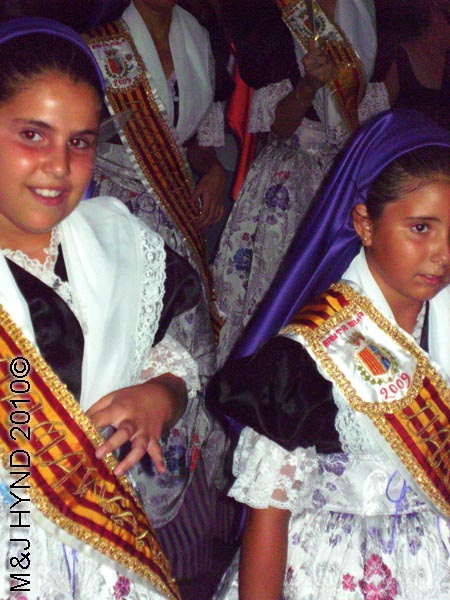
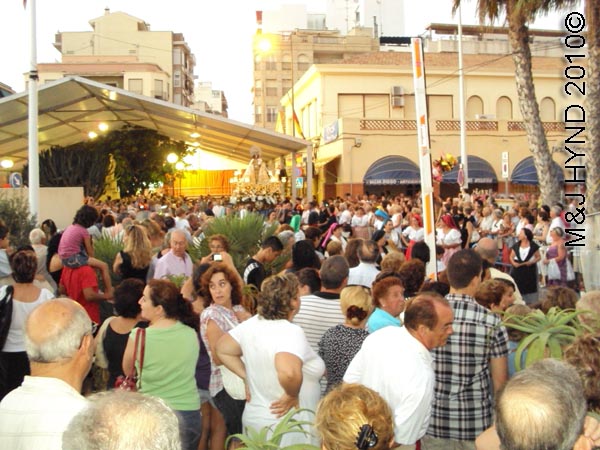
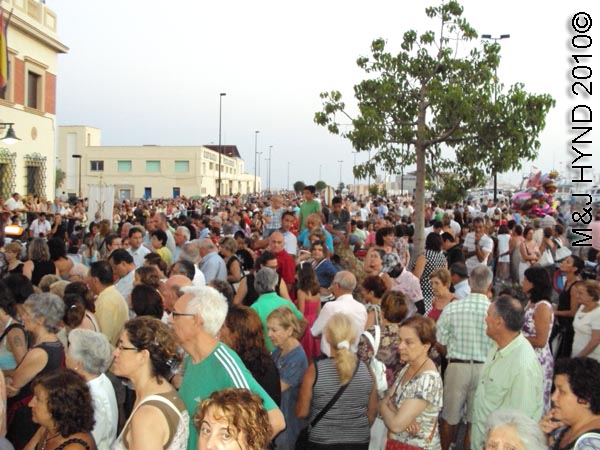

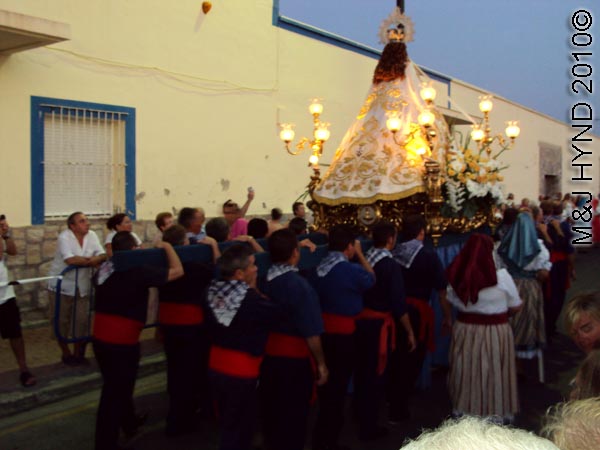
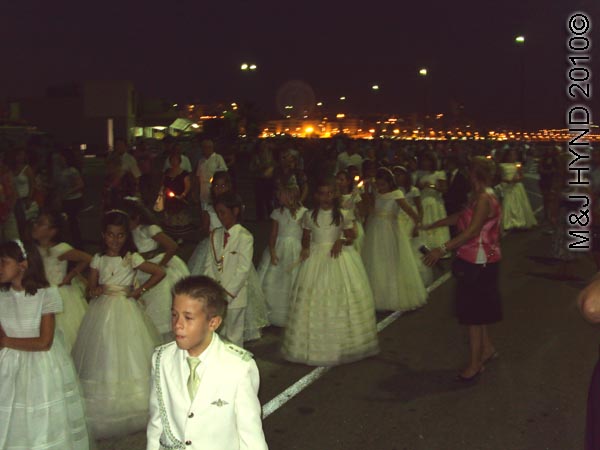
It was a touching ceremony: to dedicate their lives to the sea for their livelihood and to receive the bountiful gifts from the sea as a thanks-giving. There, in the party/fiesta atmosphere in Santa Pola, there is a bond with the sea that is unchanging – Viva Espana!.




